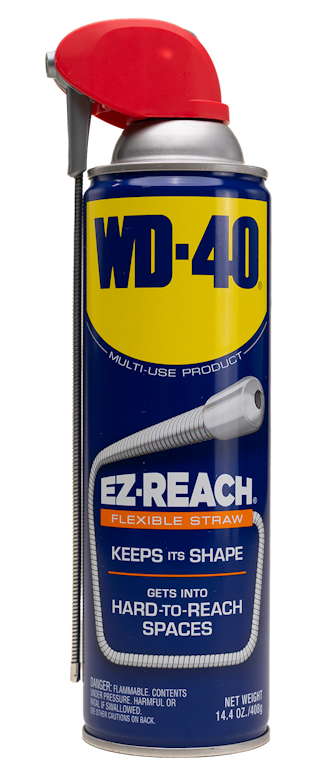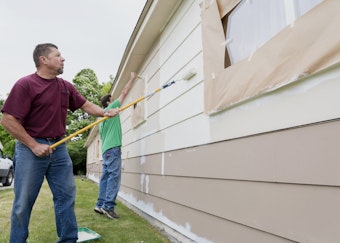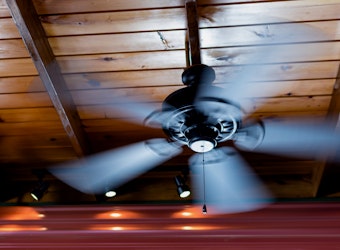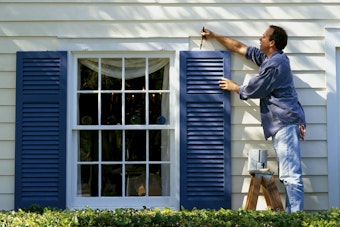Home Gutter Upkeep and Installation
Home Gutter Upkeep and Installation
<< BackYour home’s gutters take a beating from weather, storms, and general wear & tear. Standing water due to the build up of debris can also take a toll. Routine maintenance can keep them flowing smooth and extend the lifespan of your gutters – read on below to learn more about gutter upkeep and repair.
Gutter Maintenance
Setting a regular time to clean out gutters every few weeks or each season (depending on the conditions around your home) is a solid start to ensuring your gutters go the distance. With proper care, you may only have to replace your gutters once a decade or even longer. Your gutters will also function as desired and prevent leaks and drainage problems. You can use a regular gutter cleaning service or do it yourself with an extension ladder (available at Lowe’s) or other device to safely reach the gutters and clean them by hand.
When working with ladders, place the legs on firm, flat ground – not steeper than 75 degrees. Have someone on hand to hold the ladder and to assist if anything goes awry. Consider a ladder stabilizer for maximum safety.
Depending on the flora surrounding your home, you may also need to clear the roof of leaves, pine needles, and other items that may block and clog your gutter. Combining this task with gutter maintenance can save you from setting up the ladder again and again.
Replacing Gutters
Guttering is an essential part of a home’s external functionality and shouldn’t be ignored when it falls into disrepair. The drainage systems carry water away from the house and helps with protecting the roof. To ensure no lasting damage to your home, repair or replace your gutters before the trouble gets out of hand.
Remove old gutters – lightweight, plastic guttering can be relatively easy to remove. Older houses with cast-iron or other heavy guttering will require help or possibly a professional service. Prevent the guttering from falling as you remove it by hammering nails below the board for support as you cut through any bolts joining the sections of gutter. You can tie a rope around the section of guttering you wish to remove and lower it to the ground. Take off the gutter joints as well as the brackets and continue to take away the downward facing pipes until all the old guttering is removed.
Install New Gutters
If you’re starting from scratch or if this is your first gutter install, you might need to do some research on what kinds of systems to use in your area (aluminum, plastic, cast-iron, etc), where to source materials, and more. For a follow-along video guide to install a new gutter system, check out this video from This Old House. Another handy resource is Mr. Fix It DIY who offers a DIY guide for gutter installations. For measurements, you can use your old gutter system before removal or make tweaks if necessary.
Begin installation by snapping layout lines. Be sure to mark the pitch from the highest point to the downspout location along the house to ensure the water will drain as desired. Snapping a chalk line between the points will help to correctly mount the gutters.
Attach brackets to the rafter tails, generally spaced 16 inches apart. Saw gutters to length, angling for corners (typically 45 degrees) as needed. Overlap gutters by 8 inches when two sections meet at different levels. When capping gutters, attach a spherical end cap using aluminum pop rivets to the square-cut end. When gutters do not turn a corner, fasten caps at each end. You can add a watertight seal to end cap seams using high-quality siliconized exterior caulk.
Mark the downspout locations and cut the holes using a 4-inch hole-saw chucked into a drill bit (alternatively, a hammer & chisel). Mount the brackets and rotate the gutter into place, securing with machine screws. Fasten the vertical gutters to the horizontals using pop rivets and a slight crimp of the down spout, adjusting as necessary with elbow sections.
If adding a rain barrel, set concrete pavers (2” thick minimum) directly below the downspout. Place your rain barrel on the paver, install the diverter, and attach the downspout to the diverter. Fix a hose spigot to the drain spout and feed your garden from the sky.
Pro Tip: Plastic guttering expands in hot weather, and contracts in cold. Cast iron guttering can often be tricky to fit. Use WD-40 Specialist® Silicone to lubricate the joins during installation of new guttering and help ease the fitting process.
FEATURED PRODUCTS
WANT TO GET MORE TIPS AND TRICKS?
SUBSCRIBE TO THE NEWSLETTER




